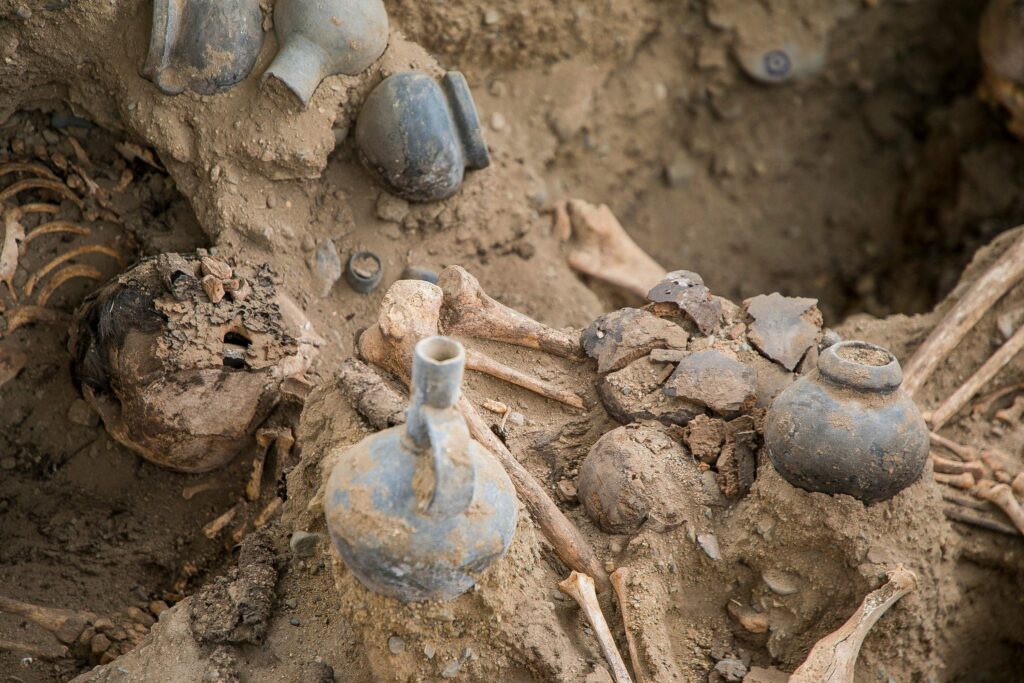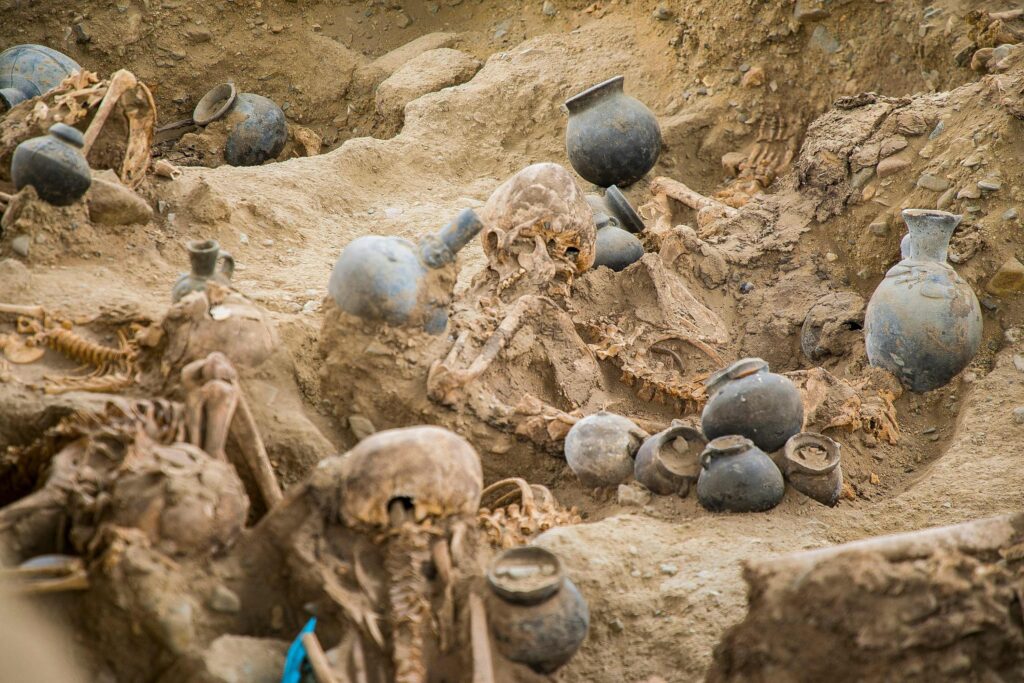Archaeologists Discover Mass Grave With 25 Skeletons In Ancient City Of Chan Chan
In the ancient Peruvian city of Chan Chan, an intriguing archaeological discovery has shed light on the burial practices of the Chimú civilization. Archaeologists have uncovered a mass grave containing 25 to 30 skeletons, believed to be the final resting place of the elite members of this society.
The remains were found in a compact area measuring approximately 107 square feet, within the former capital of the Chimú empire. This empire thrived during the 15th century before eventually succumbing to the Incas in 1470 AD. Despite the Chimú culture’s association with human sacrifices, there is currently no evidence suggesting that such practices took place at this specific site.
While the exact causes of death remain unknown, researchers plan to conduct further tests to unravel this mystery. The discovery offers valuable insights into the funerary customs and social structure of the Chimú civilization.
The Chimú were a pre-Incan culture that emerged from the remnants of the Moche culture along the Peruvian coast around 900 AD. Occupying a strip of desert between the Pacific Ocean and the Andes, the Chimú thrived between the 14th and 15th centuries, establishing a complex society characterized by various levels of social hierarchy.
Unlike many mass graves found in and around the ancient city, which often resulted from human sacrifices, the positioning of these 25 to 30 skeletons suggests that they were buried shortly after the individuals’ deaths. The remains comprise men, women, and children, with women under the age of 30 representing the majority.
Notably, the Chimú empire is renowned for its association with human sacrifices. In 2019, the largest sacrifice of its kind was uncovered, involving more than 140 children and numerous llamas. These grisly rituals were performed to appease the gods of an extinct religion. The children, aged between five and 14, were sacrificed during a period of major flooding and storms caused by El Niño, around 1450, the peak of the Chimú civilization in northern coastal Peru.
The recent discovery of the mass grave in Chan Chan adds a new dimension to our understanding of the ancient practice of child sacrifice. This unexpected finding challenges previous assumptions and expands our knowledge of the Chimú culture. The thorough excavation and multidisciplinary analysis carried out by the research team provide valuable insights into the ancient world and demonstrate the significance of continued exploration in uncovering the mysteries of the past.
This remarkable archaeological discovery at Chan Chan highlights the ongoing importance of preserving and studying ancient sites to unravel the stories and practices of civilizations that have long since passed. As further investigations and analyses are conducted, more insights into the customs and beliefs of the Chimú people are likely to emerge, enriching our understanding of the complex tapestry of human history.
Hits: 18





